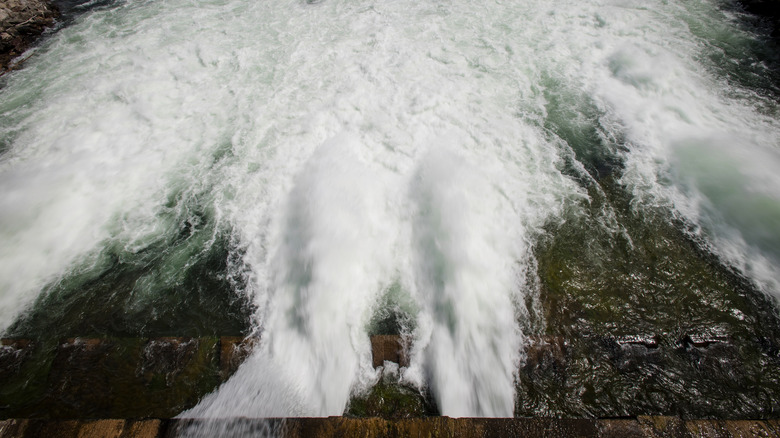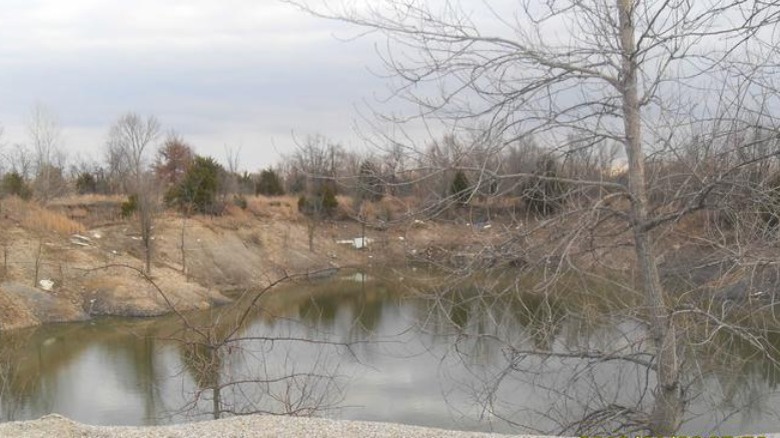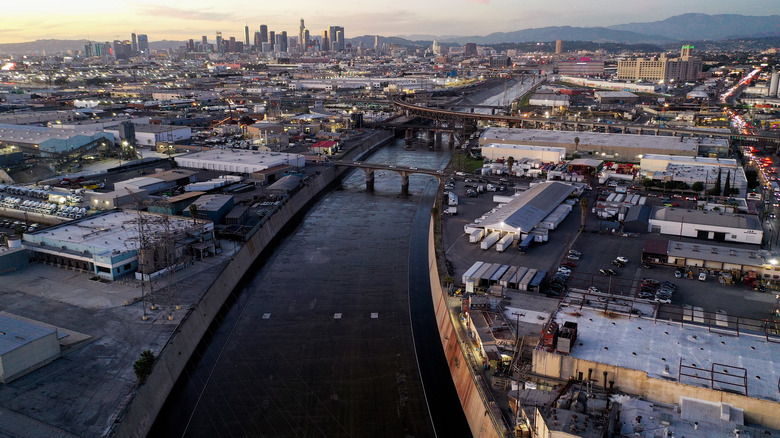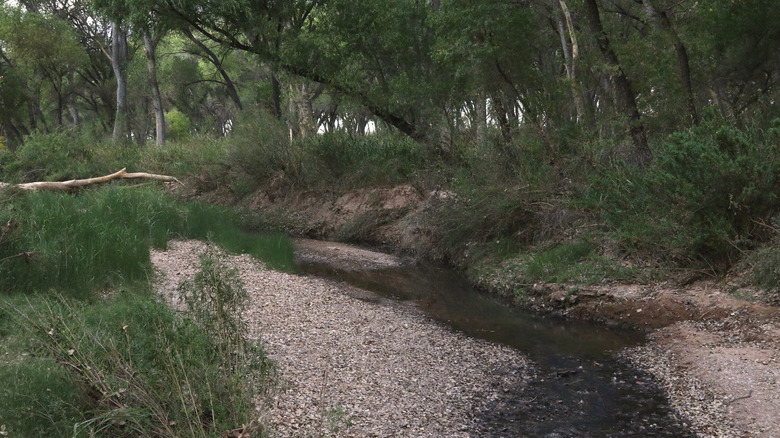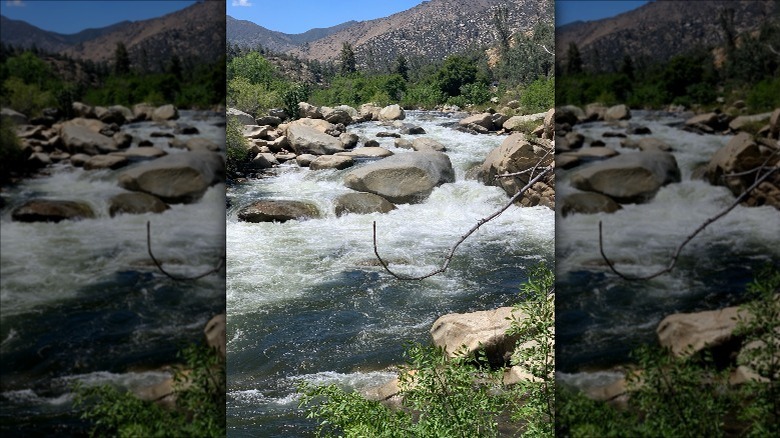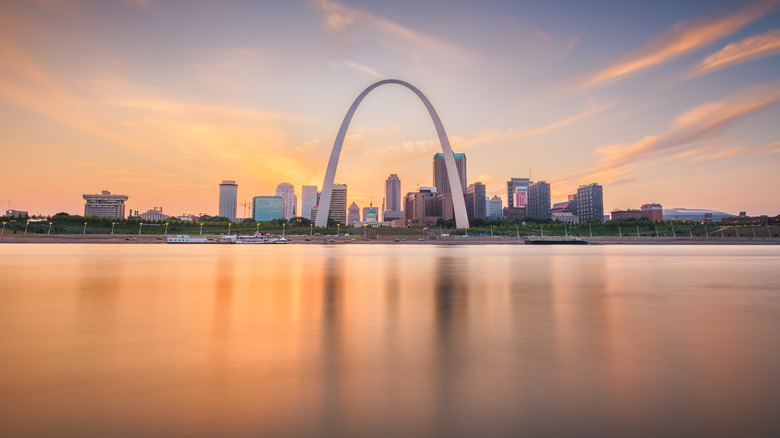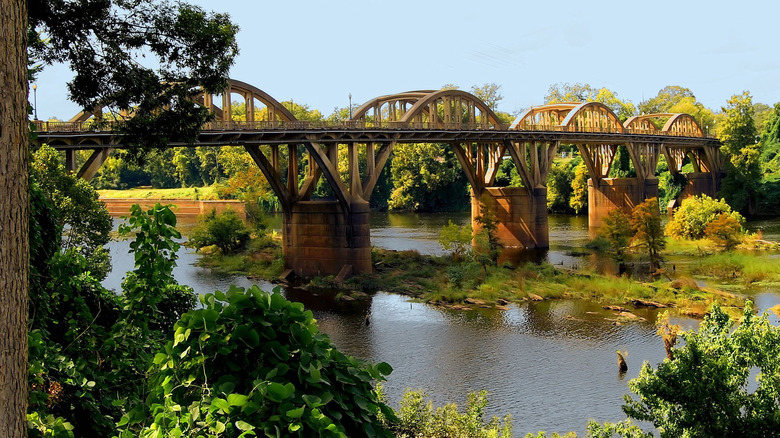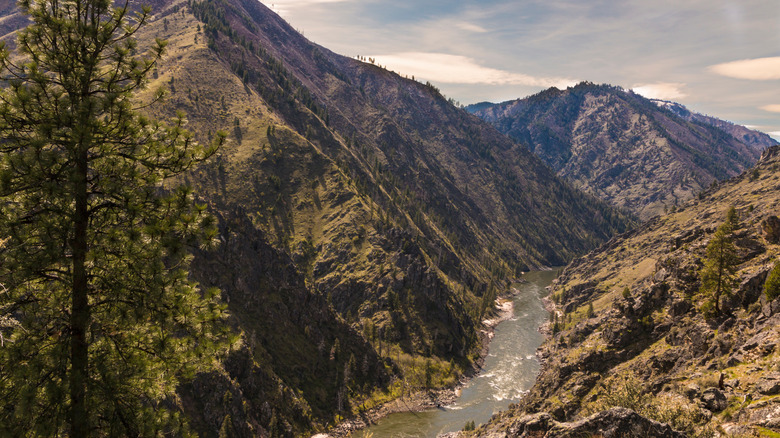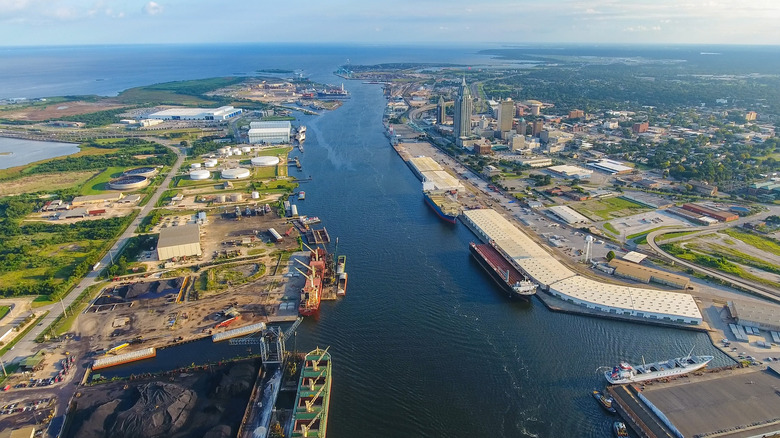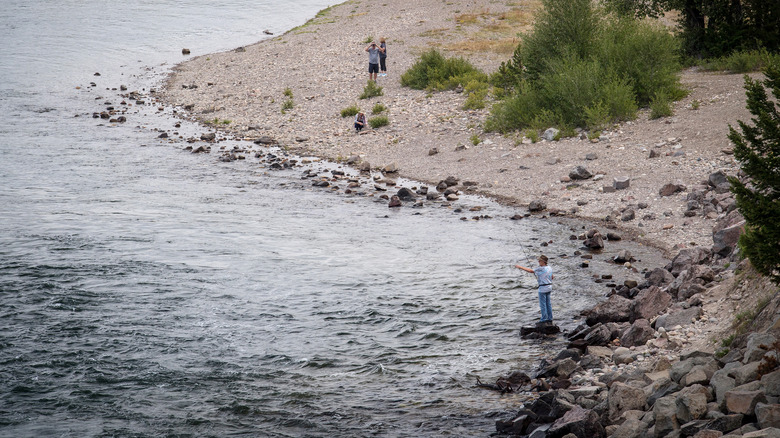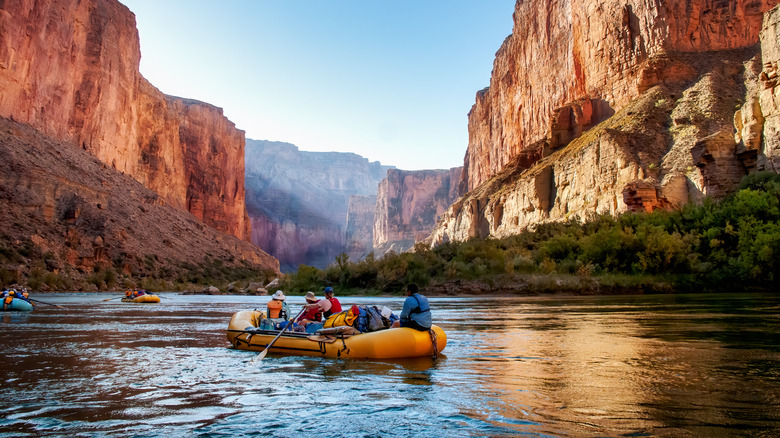The Most Endangered Rivers In America
It should (hopefully) come as no surprise to you that the Earth is in trouble. Climate change, pollution, and many other environmental issues are leading us into catastrophe. Some of the more obvious and destructive problems make headline news – like the increasing number and power of hurricanes or the fact that half the United States is now on fire every summer.
But there are plenty of very serious environmental issues that cause dire but quieter and more local problems. So it often is with rivers. There are enough rivers in serious trouble that the nonprofit American Rivers organization releases an annual Top 10 list of the most endangered ones in the United States. Many of those that make the list are small enough that those who don't live in the same state have probably never even heard of them. But each and every one is vital for their local ecosystem, and the loss of any of these rivers could have huge consequences for people and animals alike.
Here are the most endangered rivers in the U.S.
Tar Creek, Oklahoma
Coming in at #10 most endangered is Tar Creek in Oklahoma, thanks to running straight through what is now a Superfund site – the largest one in the whole country, per American Rivers. The mining in the area causes heavy metals to get into the water supply, endangering people and animals alike.
The University of Oklahoma reports that Robert W. "Bob" Nairn, director of the Center for Restoration of Ecosystems and Watersheds at the school, is no Johnny-come-lately to the creek's environmental disaster issues. After over two decades of working to clean up the area, he said, "Designation as one of America's Most Endangered Rivers may be considered long overdue, but it is crucially necessary to raise national awareness and ensure necessary resources are coupled with existing local resolve and commitment."
So what has he been working on for more than 20 years? A lot of important and technical stuff. "At Tar Creek, we designed, built, and operate two passive treatment systems – ponds, wetlands, and bioreactors – specifically designed to improve water quality by providing the correct conditions for naturally occurring physical, geochemical, microbiological, and ecological processes to take place," Nairn explained. And while after all that work you might think that landing on the Endangered Rivers list might be disheartening, Nairn says things have actually gotten better over time: "We have documented dramatic improvements in water quality, and also recovery of the fish community in the receiving stream, due to these changes." Hopefully, Tar Creek will be off the list soon.
Los Angeles River, California
You probably don't hear "Los Angeles River" and assume it's something beautiful. And it decidedly is not. Coming in at #9 on the American Rivers' most endangered list thanks to "inadequate management, climate change, and pollution," the organization explains it barely even looks like a river, since most of the waterway is lined with concrete.
As for the pollution, it's really bad, so much so that even experts quizzed by LAist can't agree on if you can safely eat any fish you catch there. "It's an enter at your own risk situation," Marissa Christensen, the executive director of Friends of the L.A. River opined, while Fernando Gomez, a river ranger for the Mountains Recreation and Conservation Authority says, "It's a personal choice," but that "folks have told me they're really good eating." Melissa Von Meyerhauser, the watershed programs manager at L.A. Waterkeeper, is unequivocal though: "It would not be a good idea to eat them given what we know about pollution levels," she said.
What kind of pollution are we talking about in the river running through the third biggest city in the U.S.? LAist lists "trampolines, rolled up carpets, a dirt bike, 1980s-era computers, flip phones, and lots and lots of shopping carts." Basically, if it's something you can use and disposed of, it's there. "The river is really a reflection of our society, especially in terms of the trash that we find," Meyerhauser explained. There is some good news, though. "We have not found dead people as of yet, luckily," she said.
San Pedro River, Arizona
The #8 most endangered U.S. river in 2022, according to American Rivers, is Arizona's San Pedro River, due to "unregulated groundwater pumping" and "poorly planned development." In layman's terms, there are a ton of new houses going up in the area, and all those people need indoor plumbing. The river simply can't support them all. Soon, it could effectively be gone. As Mick Meader, co-president of the Cascabel Conservation Association, explained to Earthjustice, "A new upstream city of 70,000 people will be pulling water from the ground in an unsustainable way. Most of that water will never be replaced. It's a potential death sentence for the Lower San Pedro."
In a desert state like Arizona, water is a precious commodity, and when humans move in, they take that vital resource away from the wildlife in the area that needs it just as much. Peter Else, chair of the Lower San Pedro Watershed Alliance warned, "The Lower San Pedro watershed supports the last intact desert river ecosystem in the Southwest." Once it's gone, the environment of that area will be forever damaged.
And this isn't a theoretical fear. As Sandy Bahr, director for Sierra Club's Grand Canyon Chapter, explained, this exact issue is something that has happened in the state again and again: "Arizona has allowed development and other diversions to dry up and destroy several important rivers. We cannot, we must not, allow the San Pedro to join that list."
Lower Kern River, California
American Rivers lists the Lower Kern in California as the seventh most endangered river in 2022, thanks to "excessive water withdrawals." But unlike with the San Pedro River, which is in trouble because the booming population in its area needs water in its houses, the Lower Kern is being drained to grow crops. By the time the river makes it to Bakersfield in the San Joaquin Valley, it – well, actually, that's the problem. The river doesn't make it to them anymore, so what they have is a "dusty, lifeless riverbed" where it used to be.
The problem lies in the fact that water, even in a naturally forming river, has become a commodity. According to the Water Association of Kern County, various state and local bodies have taken each other to court for decades in order to get more of that sweet H20. And the rights that were parceled out in the first place weren't exactly based on fairness. A lawyer for various environmental groups in recent suits, Adam Keats told the Los Angeles Times that the river is drying up because of "water rights that are legacies from a period long ago that was founded upon theft, oppression, and ripoff."
Two lakes have already disappeared thanks to the water withdrawal. Activist Miguel Rodriguez told the paper, "It's sad to think that we're allowing our natural resources to be taken away to that degree where it's killing the environment, it's killing the natural process of our land, the watershed."
Mississippi River
The Mississippi River is the backbone of the United States. It quite literally divides the country, with "east of the Mississippi" and "west of the Mississippi" being common ways to describe places. Its importance as a way to transport people and goods cannot possibly be measured. During the Civil War, according to the Mississippi Department of Archives and History, which side controlled the river was not just important from a military and economic perspective, but the symbolism of that control weighed heavily on people mentally.
So imagine how the country will feel when no one has safe access to the Mississippi. In 2022, American Rivers placed it at the #6 most endangered in the U.S. Naming pollution and habitat loss as the direst threats to the health of the waterway, the organization acknowledges that plenty of organizations are trying to do something to save it. However, these attempts are hampered by other issues that have nothing to do with the environment. "To address the multitude of inter-related environmental issues along the Mississippi River, we need a coordinated, holistic approach ... at the moment, the restoration and resilience programs on the Mississippi River are disjointed and poorly coordinated," the organization's Restoration Director, Olivia Dorothy, explained.
It will take a lot of work. The National Parks Service reports that many stretches of the river have dangerously high levels of "mercury, bacteria, sediment, PCBs (polychlorinated biphenyl), and nutrients." And The National Wildlife Federation adds that the Mississippi River Delta, in particular, is "experiencing the highest rate of land loss in the United States."
Coosa River
The Coosa River runs through Alabama and Georgia. American Rivers places it as the #5 most endangered, due to severe pollution caused by businesses along it banks.
The non-profit Coosa Riverkeeper differentiates between the chemicals dumped in the river that are "toxic" and those that are "harmful." When it comes to the former, the biggest contributor to the 1 million pounds of toxic chemicals that end up in the river every year is almost completely down to the actions of one company: Koch Foods. Two of their chicken processing plants are responsible for an astonishing 95% of that kind of pollution. However, when it comes to the "harmful" chemical category, it's the Gaston Steam Plant in Wilsonville and the Resolute Forest Products Coosa Pines paper mill that is by far the biggest problem. In theory, the Federal government could fix this just by enforcing the Clean Water Act. For whatever reason, it doesn't, at least not near enough.
"Toxic chemicals in our rivers and lakes aren't just bad for the fish. Most Alabamians get their drinking water from our rivers," Coosa Riverkeeper founder and former executive director Frank Chitwood explained. "Removing these toxic chemicals from drinking water costs money that ultimately gets passed on to ratepayers. Industries should not be allowed to externalize their cost of doing business onto the people of Alabama in the form of toxic pollution." In other words, polluting saves the companies money, which ruins the river, and then it's the government's job to clean up their mess – using your tax dollars.
Maine's Atlantic Salmon Rivers
Coming in at #4 on the American Rivers list are Maine's Atlantic Salmon Rivers. Technically a series of rivers rather than a single waterway, they are home to, what else, salmon. Or rather, they used to be teeming with them, but now thanks to the various hydropower dams humans built on them, as well as pollution and overfishing, the native Atlantic salmon is critically endangered, according to Maine's Department of Marine Resources.
The drop in population is staggering. In 2022, one of the rivers in the system saw a 61% drop in returning salmon, with only 561 counted. There are no zeros missing there, that's it. That's all there was. "The reasons for the low runs are likely low survival of fish at sea, the impacts of drought during their time in the river and impacts of impoundments and direct mortality at hydropower projects as the fish migrate from the rivers to the sea," Sean Ledwin, the state's Sea Run Fisheries and Habitat Director, told WGME.
There are attempts to bring back the salmon population by giving they ways to get around the dams, but it sounds like the chances are a bit of a longshot. "Ultimately the fate of the species in the United States really depends upon what happens at a handful of key dams," John Burrows, executive director of U.S. programs at the Atlantic Salmon Federation, explained to The Revelator. "If those four projects don't work — or even if just one of them doesn't work — you could basically preclude recovering Atlantic salmon in the United States."
Mobile River, Alabama
While you might not have heard of it, American Rivers explains that the Mobile River in Alabama is a lot more important than you'd think: It holds 14% of all the "flowing freshwater" in the U.S. That means anything that makes the water dangerous or affects the ecosystem around it will have an outsized effect.
What makes the fact that the Mobile River is at #3 on American Rivers' list of most endangered is that it is due to decisions by the government of the state of Alabama not to protect it. While the organization lists "pollution" as a somewhat vague reason for the danger to some other rivers on the list, when it comes to the Mobile River's problem, it is much more specific: coal ash. The non-profit Mobile Baykeeper explains the culprit is the James M. Barry Electric Generating Plant – known as Plant Barry – which piled its coal ash in pits along the river.
As Jonathan Levenshus, the Sierra Club's Director of Federal Energy Campaigns, warns, "Coal ash pollution is a serious public health crisis; it poisons the water that communities rely on. Plant Barry's coal ash ticking time bomb is an example of what happens when regulatory agencies like Alabama Department of Environmental Management focus on protecting industry instead of the communities they are supposed to serve." In this case, environmental racism is a factor as well, since many of the areas near the river that are most affected are communities of people of color.
Snake River
The Snake River, which flows through Washington, Oregon, and Idaho, is the 2nd most endangered river in the country, according to American Rivers' list. As with Maine's Atlantic Salmon Rivers, the problem is a decimated salmon population, and the reason is dams. There are four of them built across the river, and they have almost driven the fish to extinction.
The situation has led to some very unexpected opinions from strange bedfellows. Environmental non-profits like Save Our Wild Salmon are trying to get hydroelectric dams – an environmentalist's dream compared to fossil fuels – and Republican politicians are pushing for policies that are overtly green. "I am going to stay alive long enough," the then-68-year-old U.S. Rep. Mike Simpson said in 2019, "to see salmon return to healthy populations in Idaho" (via the Sierra Club).
Local tribes are also heavily involved in the plans to bring back the salmon. Not only do they have fishing rights on the river, and care about the effects on the ecosystem, but the fish is sacred to many tribes in the region. "In our creation stories, salmon give themselves to the people for nutrition and for our survival. And as the salmon take care of us, we will take care of the salmon," Shannon Wheeler, chairman of the Nez Perce Tribe, said (via the Sierra Club). "By taking part in this process, we are doing what we have always promised to do — upholding this ancient covenant that ensures our survival and the health of the landscape."
Colorado River
There are actually two Colorado Rivers in the U.S., and confusingly, one of them runs through Central Texas. But the #1 spot on American Rivers' endangered list goes to the more famous one, the one that actually flows through, among other states, Colorado. Famous around the world thanks to its association with the Grand Canyon, the river is in serious trouble. The Colorado isn't just for kayaking down and enjoying the scenery: it is vital to supply drinking water to tens of millions of people, to mention irrigate millions of acres of farmland. But climate change, as well as "outdated management," is imperiling all of that.
David Bennett, director of water resource strategy for Denver Water, explained, "For so long, these issues on the river seemed more distant. But as the long-term drought within the Colorado River Basin continues, it's now become one of the biggest challenges we've ever faced."
Its fame could be something that helps the Colorado River get more attention for its plight than other lesser-known rivers. While the problems might be local, scientists everywhere can connect with the beautiful images they have seen of the river flowing through the Grand Canyon. "This used to be more regional," John Entsminger, general manager of the Southern Nevada Water Authority, told KUNC. "Maybe occasionally a national story. But we saw people discussing the Colorado River as a case study in Glasgow." With so many eyes on the problem, hopefully, something will actually be done.
